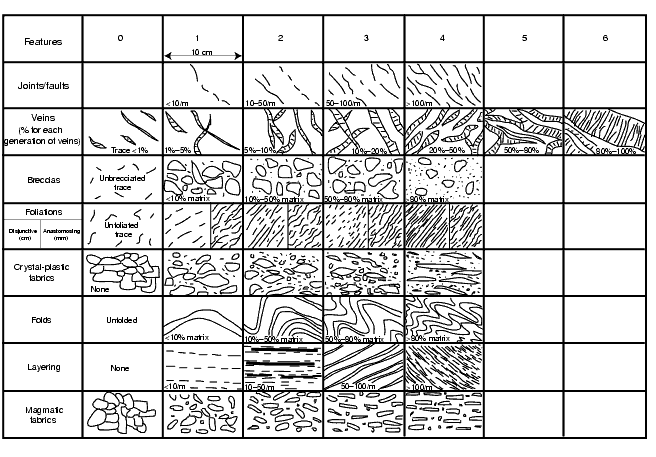Figure F11. Table showing intensity scales applied to structural identifiers for brittle and ductile deformation (from Shipboard Scientific Party, 1995). The intensity of joints and faults is related to spacing estimated by the linear intercept method along the central divide of the core piece. If a piece was unoriented, then spacing was estimated along the long axis of the piece. Vein intensity is related to an estimation of percentage of veining on the cut face of the archive half of the core. This scale has been subdivided into seven groups so that the relatively low percentages encountered during Leg 153 could be distinguished. Brecciation intensity relates to the relative percentage of clasts to matrix. Foliations and crystal-plastic fabrics broadly relate to the attenuation of porphyroclasts and/or the spacing of foliation planes. Fold intensity relates to the interlimb angle for individual or multiple folds. Layering intensity relates only to the layer width and was applied to any layers with discrete or gradational boundaries. Such layers included primary magmatic layering, alteration, or grain-size variations. Magmatic deformation intensity relates broadly to the degree of shape preferred orientation of magmatic phases.
